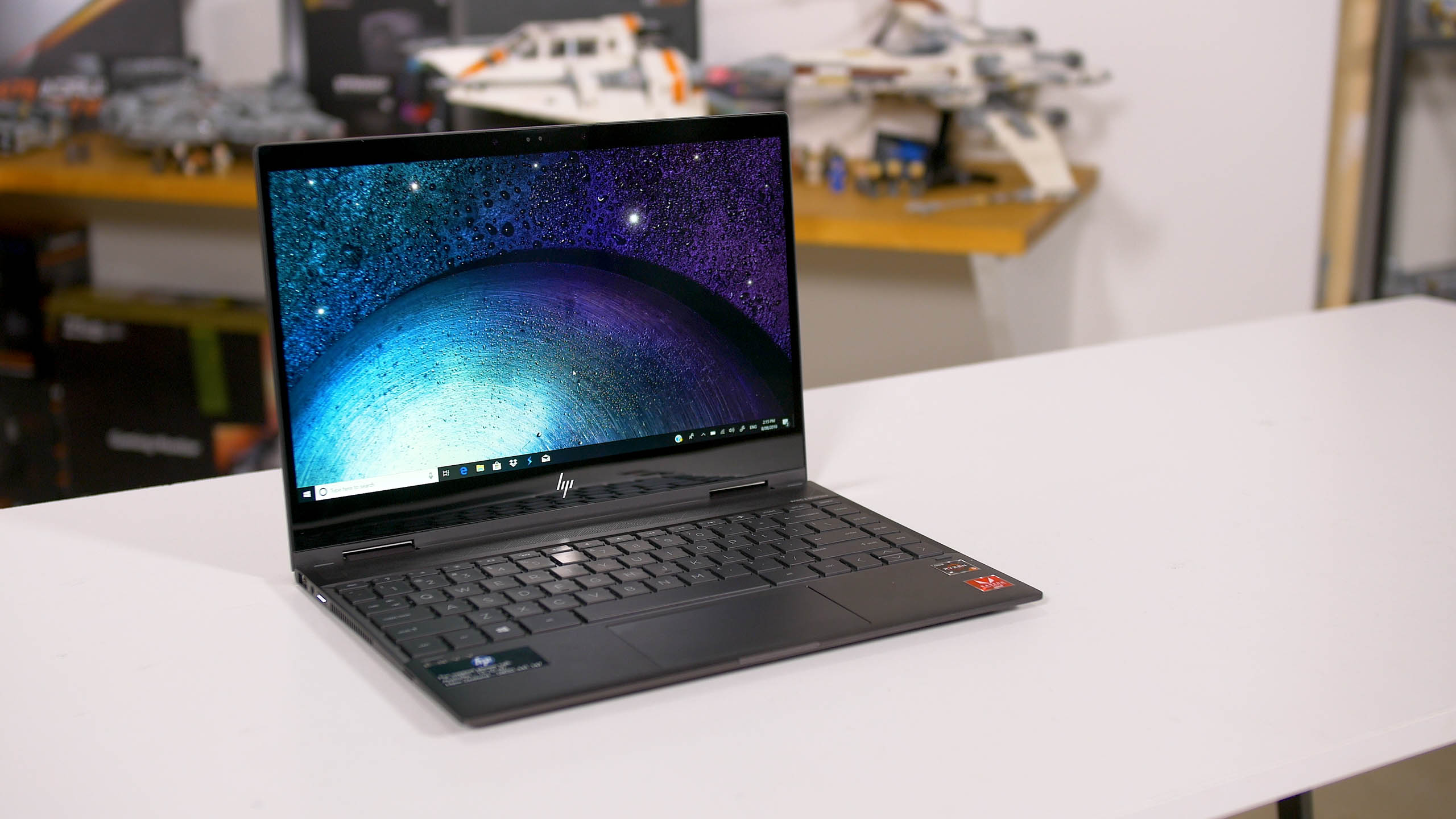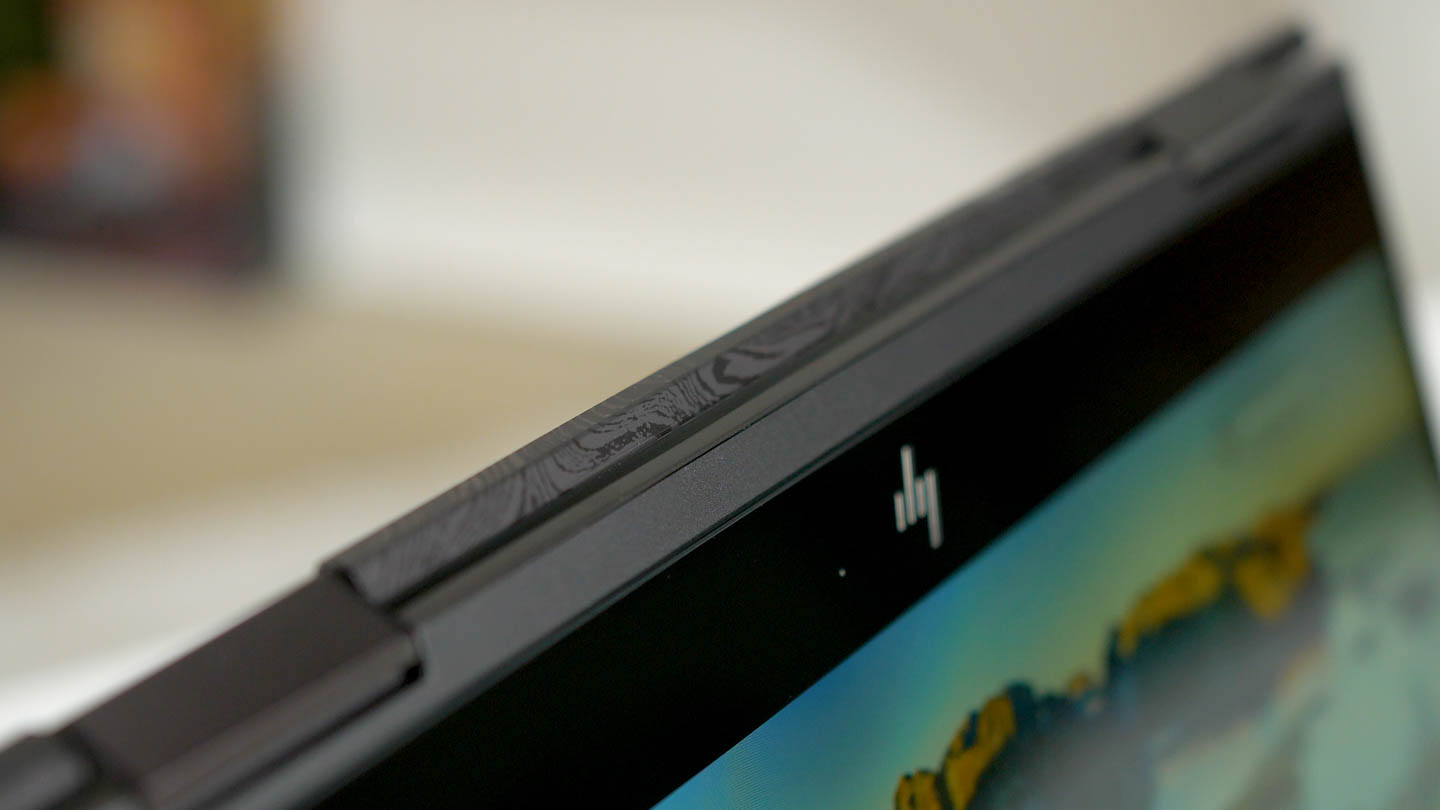Today we're finally looking at another Ryzen Mobile laptop, the second ever system we've had proper hands on time with. Despite a few difficulties finding these systems on the market, HP has pulled through with their brand new Envy x360 13-inch, and this - spoiler alert - is a fantastic system. The level of performance you get in this form factor, and at a sub-$700 price point, is hard to pass up, and that's without mentioning numerous other features HP has managed to cram into this machine.
The Envy x360 13 also provides us with a platform to see how Ryzen Mobile fares in a 13-inch form factor for the first time. When we initially reviewed Ryzen Mobile in the 15-inch Envy x360, it was good but we thought the real strength of this APU would be in ultra-compact notebooks pitted directly against Intel Kaby Lake Refresh systems without discrete graphics. After all, we know how disappointing Intel's integrated graphics is, so to get an APU with a more powerful GPU in the exact same form factor is a very attractive proposition. I'll talk a bit more about the performance later on.
If you weren't aware of the price tag, it'd be easy to mistake the Envy x360 13 for a high-end system. The pressed aluminium shell with an anodized grey finish looks incredible for a mid-range device, with elements like the patterned spine and deep black glass bezels adding to the premium finish. The newer HP logo on the lid combined with expansive slabs of metal and relatively few seams or changes in materials delivers a minimalist design that we love.
The 13-inch Envy x360 is also super compact. There's pretty slim bezels around the 13.3-inch 1080p display, not the slimmest I've seen, but it's hard to complain about. The wedge design is reasonably thin at 15mm and despite having that 360-degree hinge, the whole unit weighs just 1.27kg which is slightly under the average I'd expect for a laptop this size.
Just on the 360-degree hinge, again it's not a feature I personally use a lot, though some people may find the tablet and stand modes useful in some situations. The one thing I love about these convertible designs, though, is that having these extra modes does not compromise the laptop experience in any way: you still get a great keyboard and trackpad, with the ability to use it on your lap with ease. The more tablet-focused devices like the Surface aren't nearly as good in that regard.
HP includes a pen in the box, which supports Windows 10's native inking functionality and packs 1024 levels of pressure sensitivity, though HP tells me a pen with 4x the sensitivity is available as an optional extra for those that require it. The pen works really well, and it's great you get it in the box for those that want to annotate or draw; no need to spend $100 on an accessory just to get the functionality.
I/O is decent, you get two full-sized USB 3.1 gen 1 ports plus a USB-C 3.1 gen 2 port, no Thunderbolt 3 here but you can charge the laptop through USB-C if you have a charger that supports the appropriate amount of power output. Otherwise, the Envy x360 also chargers over a proprietary connector and that's the charger included in the box. There's also a 3.5mm headphone jack and microSD card slot.
The sides also include the power button, volume buttons, and a sizeable fan vents so there wasn't a whole lot of extra space for further I/O, but what has been included is sufficient, especially as you can turn the USB-C port into a variety of display outputs through a dongle. This laptop is simply too thin for something like full-sized HDMI.
The keyboard is as good as ever, borrowing the exact same design as other Envy and Spectre devices. The clicky tactile response is one of my favorites among ultrathin laptops; each key is extremely stable and the layout is decent so you get an awesome typing experience. The trackpad isn't so good, it's fine, but it could do with a bit more vertical height and it doesn't have quite the same responsiveness or accuracy as the best trackpads I've used.
A large section above the keyboard is used for the speaker array with Bang & Olufsen branding, and the sound quality they produce is pretty decent for a laptop. Nothing amazing, they lack low-end punch like most laptop speakers, but at least they can go pretty loud without epic distortion. And I wouldn't describe them as super tinny either.
The display, at least in my review unit, is a 13.3-inch 1080p IPS LCD with performance that fits this laptop's mid-range price. Brightness is average, topping out at just 250 nits, as is the contrast ratio which falls a touch below 1,000:1. Viewing angles, though, are outstanding and as you might expect for a convertible, there's a touchscreen included that works well.
In terms of color performance, we're looking at 89% coverage of the sRGB gamut, which is a little below what I'd normally like to see, but significantly better than the 15-inch Envy x360 that supported only 67% coverage. Looking across the accuracy charts and it's all very average again, with deltaEs in the 4.0 to 6.0 range. The display looks fine from an initial glance but it's not something you'd want to use for any serious color work, at least without full calibration.





